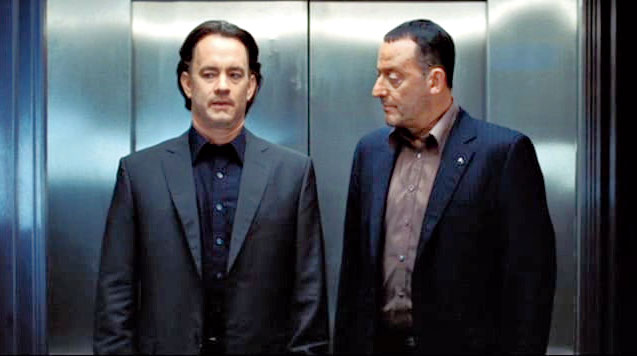Kiss the elevator pitch goodbye — at least if it takes place in an elevator.
Change is coming to the daily vertical commute, as workers begin to return to tall office buildings in New York and other cities. The elevator ride, a previously unremarkable 90 or so seconds, has become a daunting puzzler in the calculus of how to bring people back to work safely after the coronavirus pandemic kept them home for months.
Employers and building managers are drafting strict rules for going up: severe limits on the number of riders (four seems to be the new magic number), designated standing spots to maximise social distance, mandatory masks, required forward-facing positions — and no talking.
Some companies are hiring “elevator consultants” to figure how best to get thousands of people to their desks, balancing risk of elevator density against a potential logjam as riders wait — at least six feet apart — for their turn.
Reflecting the widespread interest and concern, the Centres for Disease Control and Prevention (CDC) plans to weigh in as early as next week with guidance for elevators and escalators.
For elevators, it will recommend limiting the number of riders but won’t specify a number; arrows showing different paths to get on and get off; masks; and signs urging people to “not talk unless you have to”, said Nancy Clark Burton, a senior industrial hygienist at the CDC.
The changes are the result of clear science. Covid-19 is most transmittable when people are in tight confines, particularly indoor settings, where invisible droplets can travel from one person to the next, collateral damage of a seemingly innocuous conversation.
“The good news is: If you don’t like small talk in the elevator, those days are over,” said Jonathan Woloshin, head of US real estate at UBS Global Wealth Management’s chief investment office, who has spoken to executives from major companies rethinking elevator policy and technology, including the eventual use of elevators called by voice command or app.
Richard Corsi, dean of engineering and computer science at Portland State University, has calculated how much virus would remain in an elevator if an infected person rode 10 floors, coughing once and talking on a smartphone. After exiting the elevator — an act that released some of that person’s emissions from the elevator — approximately 25 per cent of the person’s discharge would remain by the time the empty elevator returned to the first floor, he estimated.
Dr Corsi said that the excretion from an infected person not wearing a mask would make an elevator far riskier than, say, standing in much less confined space, for the same amount of time, even indoors — “100 to 1,000 times more particles per litre of air”, he estimated.
His counsel?
“Standing as far as way as you can diagonally in elevator would be good, and do not speak,” he said.
“That needs to be part of new etiquette,” he added. “They should put big signs on the elevator: Do Not Speak.”
Part of the challenge is that commercial elevator dimensions, while they vary, aren’t built for social distancing; to meet most state standards, an elevator should be 51 inches deep and 68 inches wide (4 feet 3 inches by roughly 5 feet 8 inches), according to Stanley Elevator Company. Even many larger elevators won’t leave riders six feet apart.
“More like three to four feet,” said Douglas Linde, president of Boston Properties. “But, again, you have a mask on and you’re not speaking to each other.”
Linde said Boston Properties retained consulting services from Joseph Allen, a Harvard University assistant professor, who specialises in indoor environmental quality, and experts in managing elevator traffic.
They helped work out a math problem: What should the limit on elevator capacity be so as not to create a traffic jam in the lobby for those waiting to ride?
The consultants figured four could be a reliable limit even in the tallest buildings, so long as total building occupancy remained below 60 per cent. Otherwise, people will have to wait too long.
Linde said that assuming less than 60 per cent occupancy seemed reasonable, given that some cities weren’t allowing full occupancy in buildings yet and that many companies continued to allow or encourage working from home.
But some companies are taking issue with the limits on the number of riders, arguing that they test patience and promise more safety than can be guaranteed.
“I can’t give you the six feet in an elevator — you’d have to have someone on the ceiling and someone on the floor,” said Andrew Hardy, head of operations at JEMB Realty.
“Our sign is going to say, ‘When riding elevators we recommend using your best judgement,’” Hardy said. “If an elevator comes and two or three people are in it and you feel comfortable, you’ll get in, and if you don’t feel comfortable, wait for the next one.”
JEMB Realty is building a new commercial high-rise in Brooklyn that will have new elevator technology: a key card or fob that allows tenants through a turnstile and automatically calls an elevator to take them to their floors.
Other ideas include better air ventilation, use of ultraviolet lighting to kill germs, and antimicrobial surfaces, said Prof. Lee Gray, an elevator historian from the University of North Carolina at Charlotte. “I can’t think of any thing comparable to this,” he said. “This is the world’s smallest room and I don’t want to be in there with someone else.”
New York Times News Service










